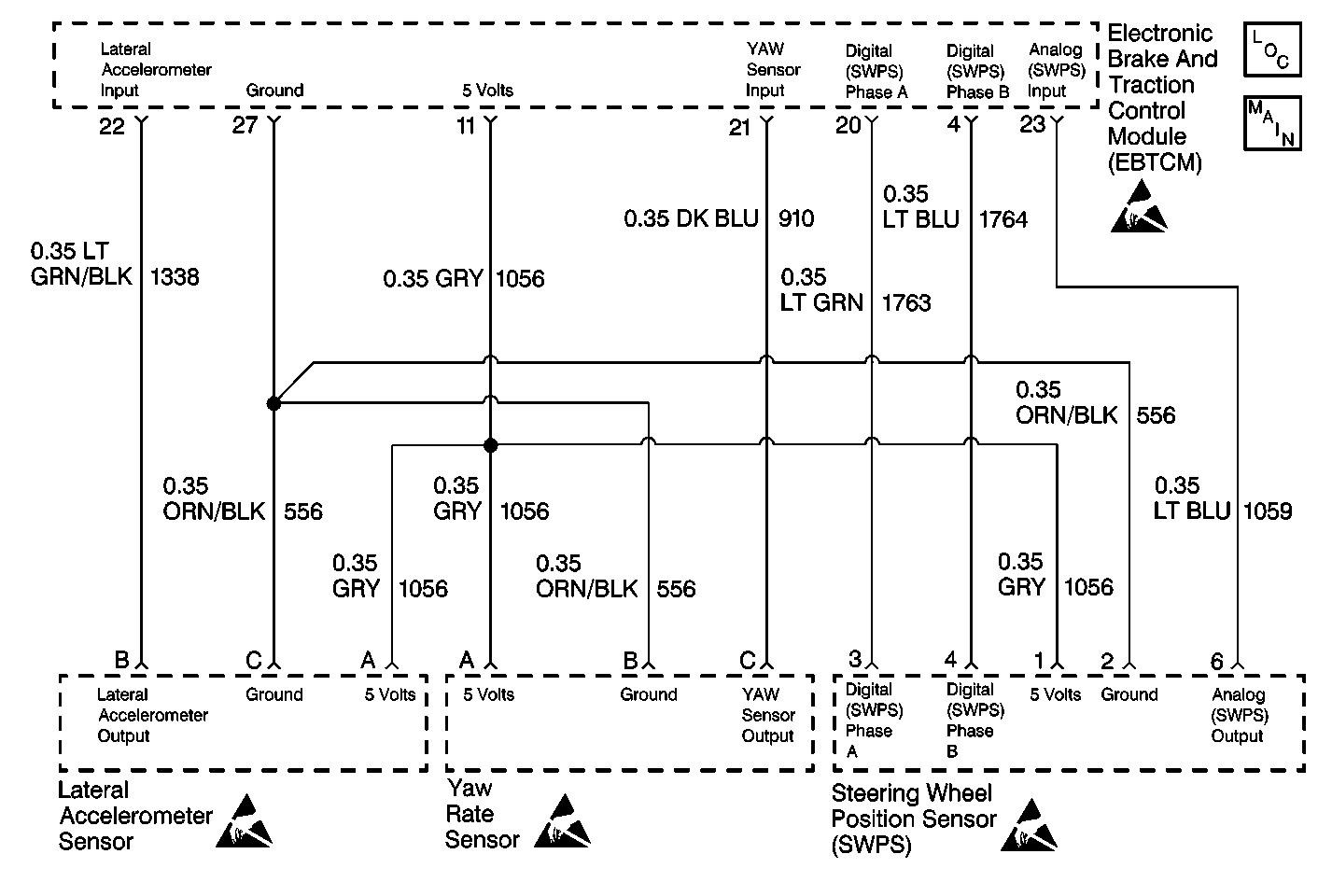
Circuit Description
Steer angle centering is the process by which the EBTCM calibrates the steering sensor output so that it reads zero when the steering wheel is centered. The initial steering wheel center position is calculated after driving 10 Km/h (6 mph) for more than 10 seconds in a straight line on a fairly level surface. The EBTCM uses the Yaw Rate Sensor, Lateral Accelerometer and Wheel Speed Sensors to tell if the vehicle is moving in a straight line. This centering routine is necessary to compensate for wear in the steering and suspension. Wear in the steering and suspension can result in a change in the relationship between the steering wheel and the front wheels. By running the centering routine the EBTCM can compensate for these changes by changing the digital and analog center position.
Conditions for Setting the DTC
The initial steering wheel center position will be determined quickly unless there is a large offset in the yaw sensor or lateral accelerometer output. When this happens the system will believe the steering is far off center even though the vehicle is being driven in a straight line. Under this condition and with a continuous vehicle speed of 40 Km/h (25 mph) or greater for longer than 10 minutes, DTC C1283 will be set.
Action Taken When the DTC Sets
ABS and TCS remain enabled, Active Handling is disabled.
| • | Indicators that turn on: |
| Car Icon (TCS indicator) |
| • | Messages displayed on the DIC: |
| Service Active HNDLG |
| Service Vehicle Soon |
Conditions for Clearing the DTC
| • | Condition for DTC is no longer present and scan tool clear DTC function is used. |
| • | Fifty ignition cycles have passed with no DTCs detected. |
Diagnostic Aids
| • | It is very important to check the vehicle for proper alignment. The car should not pull in either direction while driving straight on a flat surface. |
| • | It is very important to find out from the driver when the code was set (when the SERVICE ACTIVE HNDLG message was activated). This information may help to duplicate the failure. |
| • | It is very important that a thorough inspection of the wiring and connectors be performed. Failure to carefully and fully inspect wiring and connectors may result in misdiagnosis, causing part replacement with reappearance of the malfunction. Check connector C102 RH side rear of engine compart for water intrusion or missing plugs, and that the connector is oriented horizontal to prevent water intrusion. |
| • | An intermittent malfunction is most likely caused by a poor connection, rubbed through wire insulation, or a wire that is broken inside the insulation. Refer to Testing for Electrical Intermittents in Wiring Systems. |
| • | The Snapshot function on the scan tool may help in finding an intermittent DTC C1283. |
Test Description
The number(s) below refer to the step number(s) on the diagnostic table.
-
This step checks for the proper Lateral Accelerometer input.
-
This step checks for the proper Yaw Rate Sensor input.
Step | Action | Value(s) | Yes | No |
|---|---|---|---|---|
1 | Was the Diagnostic System Check performed? | -- | ||
2 |
Are any of the following DTC(s) present, C1221-C1235, C1282, C1284, or C1285? | -- | Go to the Applicable DTC. Refer to Diagnostic Trouble Code (DTC) List | |
Is the voltage within the range specified in the value(s) column? | 2.3-2.7V | |||
4 | Replace the Lateral Accelerometer. Refer to Lateral Accelerometer Replacement . Is the replacement complete? | -- | -- | |
Using J 39200 DMM, measure the voltage between terminals 21 and B of J 39700 . Is the voltage within the range specified in the value(s) column? | 2.3-2.7V | |||
6 | Replace the Yaw Rate Sensor. Refer to Vehicle Yaw Sensor Replacement . Is the replacement complete? | -- | -- | |
7 |
Did DTC C1283 set as a current DTC? | -- | ||
8 | Replace the EBTCM. Refer to Electronic Brake Control Module Replacement . Is the replacement complete? | -- | -- |
